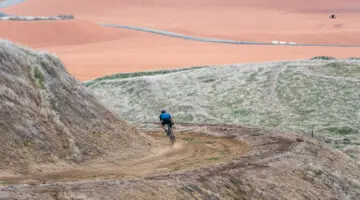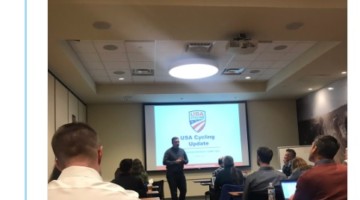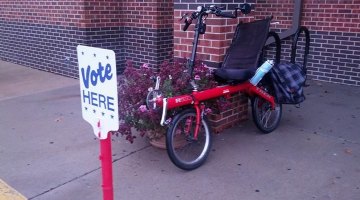Cyclocross is a sport associated with riding bikes in the muddiest, sloppiest conditions possible. Although a sloppy mud bath makes for a memorable race, it can often create a mess for local park workers on Monday morning. Creating a sustainable cyclocross race requires effective communication between promoters and important stakeholders to create a positive experience for everyone involved. Perhaps no event brought the importance of sustainability in cyclocross to the forefront than the 2015 Cyclocross Nationals in Austin, Texas.
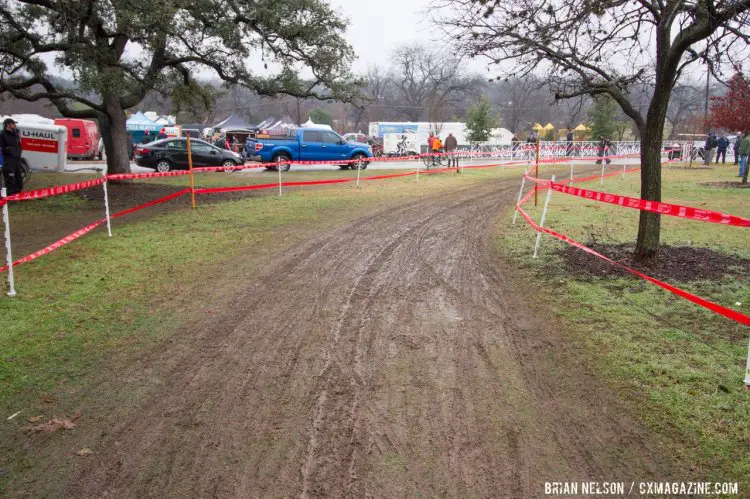
Overnight rains in Austin in 2015 created an impasse between event organizers and park officials that led to the elite races being delayed to Monday. © Brian Nelson
The 2015 Cyclocross Nationals in Austin showed, at the highest level of the sport, the havoc that can be wrought by poor communication. That year, Sunday’s Elite races were canceled after an overnight downpour exacerbated concerns about the impacts of cyclocross bikes on Zilker Park’s Heritage Trees.
To help avoid a future event like Austin, U.S.A. Cycling has stepped in to create a guidebook for sustainably managing park grounds and relationships with interested stakeholders called Landscape and Cyclocross. Today we take a quick look at the USAC manual that focuses on three key factors promoters need to effectively manage: trees, turf grass and the community.
Speaking for the Trees
The biggest issue at Austin Nationals was the potential impact of bikes on Zilker Park’s Heritage trees. The Austin race likely helped introduce many ’cross fans to tree-related concepts such as “critical root zone.”
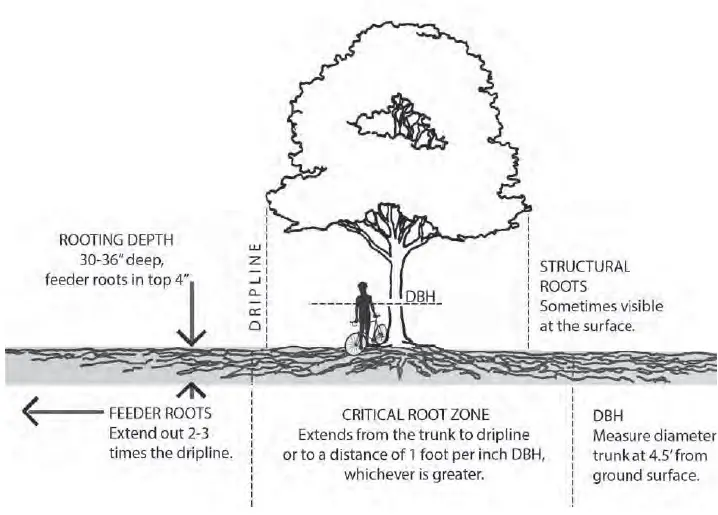
Many cyclocross fans became familiar with key tree terms after the 2015 Austin Nationals. photo: USAC
The guide offers avoidance as the best approach to managing trees, but there are times where avoiding trees all together is unavoidable. In those cases, measures should be taken to protect the trees and a plan should be made to mitigate any damages that occur.
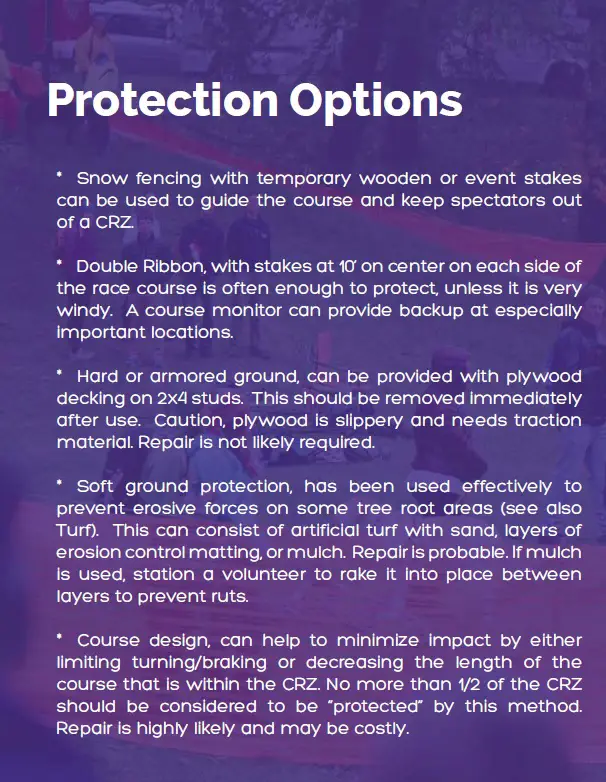
The Landscape and Cyclocross guide gives best practices for protecting trees when setting up a ‘cross course. photo: USAC
Turf Grass
The “Landscape and Cyclocross” guide succinctly captures the challenge facing cyclocross promoters, especially when rain and inclement weather appears on race day.
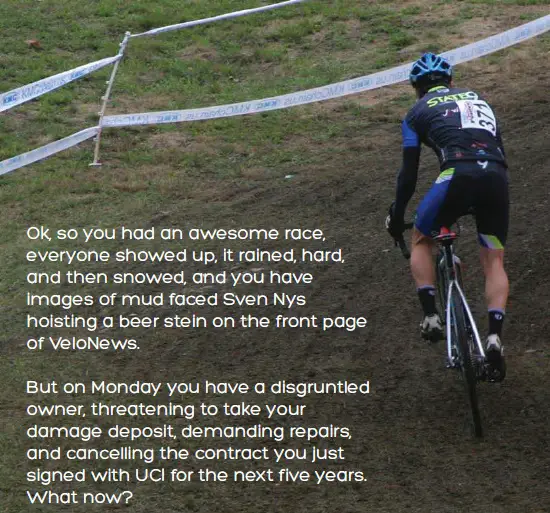
Mud races are a blast, but there are often repercussions on the Monday after the event. photo: USAC
According to the manual, the best way to prepare for turf damage is to plan ahead. Even if a hill makes the perfect run-up, if it is a focal point of the park, it might be best to avoid it and use the backside or another location to add elevation to the course. Same goes for a part of the lawn that is used for summer concerts. Minimizing the disturbance of key areas in a park can go a long way in building goodwill with the parks department and surrounding community.
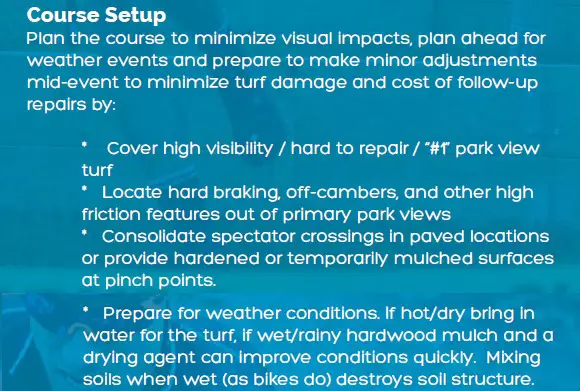
Good planning can help minimize turf damage and maintain a positive relationship with park administrators. photo: USAC
Promoters are also encouraged to document before and after the cyclocross race to assess how their race affects the structure and appearance of the grounds. In a 2004 document entitled “After Affects,” Ken Getchell provided photo documentation of cyclocross races and other sporting events across several locations in the Northeast U.S. The document showed that for ’cross races held in relatively dry conditions, the damage to the turf was less than that produced by other sports such as soccer and rugby:
After20Effects20for20Website1Having photographic evidence such as that in “Affect Affects” can provide useful visual evidence to provide local parks departments when working with them on hosting a cyclocross race.
Working With the Community
Cyclocross is one use among many for the parks where races are held, so the idea of sustainable cyclocross is ultimately about building and maintaining good relationships with local communities. This obviously starts with the parks department and government of the local community, but can also include neighbors, businesses, nature groups and a whole host of other people with interest in the health and beauty of a local park.
The issues related to trees and turf are ultimately about effective communication with key stakeholders. As the handbook describes, it is important to be proactive in helping parks superintendents know the potential impacts of a ’cross race on their property and also letting them know the measures you will take to help mitigate hundreds of bikes ripping through the grass.
Fittingly, recently I was out meeting with a local park ranger about putting in a cyclocross-specific area in a county park. My colleague and I were talking about the race his team puts on and he mentioned the positive response they have received from the county parks department for spending about $300 each year to place straw and grass seed after their race. Small gestures like that can go a long way in building a positive relationship to ensure a home for a great cyclocross race each year.
The Landscape and Cyclocross guide provides a good summary of the different ways ’cross can impact a local community, both positively and negatively.
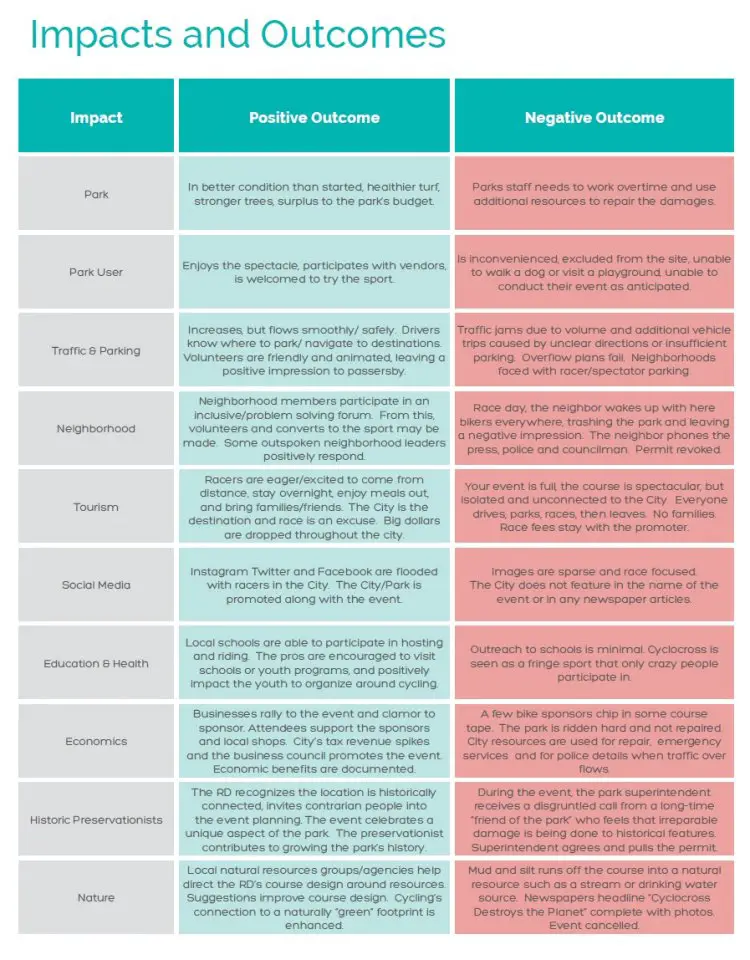
The positive (or negative) benefits of a cyclocross race can be far-reaching. photo: USAC
The guide concludes with some advice and stories from Richard Fries and Adam Meyerson. It is a good read for all race promoters and anyone interested in hosting a cyclocross race in the future.
You can peruse the full document embedded below or available here:
USA Cycling's Landscaping and Cyclocross guide
